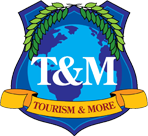Reassessing Tourism Security
March 2005
As the winter winds down and we begin to prepare ourselves for the high tourist seasons of spring and summer, this is a good time to begin to reassess our tourism security. Tourism security is not simply about weapons, guards, and hidden cameras. It is also about understanding the economics of security, reviewing your liability issues and protecting your reputation. Tourism security then encompasses not only how we train people to protect other people but also the types of insurance that we purchase, the training that we give all our employees and the relationships which we build with our allied agencies. The following is meant to remind you of at least some of the important tourism security indicators for your business and for you.
- Determine what are the security needs of the subgroups within your tourism community. For example, do people come to your location primarily by one mode of transportation or is your community multi-modal when it comes to the protection of its transportation arteries? What type of tourism lodging do you provide? Do you have a profile of your typical guest and do guests fall into one or multiple categories of guests?
- Review and determine who is liable and for what in case of a safety/security mishap. Make sure to review at least once a year with both your insurance agent and your lawyer where your company and you are open to a lawsuit. Make sure you know where and when you are responsible to provide visitor security measures. Furthermore, be careful to review any changes in the law concerning the relationship between a tourism service provider and the customer/visitor. Make sure you go over carefully all issues of “foreseeability” with both your legal team and with your professional security staff.
- List and then review all of your security tools. Divide these tools into sub-factors. For example in the educational/marketing factor you might list what public service announcements you make, where signage can be useful and what brochures you may want to distribute. In the human sub-factor category, you may want to take into account what resources the police department can provide, if there is private security available, and how well these two entities work with each other.
- Determine along with your legal and security staff a fair division of responsibilities. Which tourism actions or factors are and are not foreseeable? Where is it justifiable to expect that the guest will assume responsibility and where not? What is the relationship of a CVB or tourism office to an individual property or attraction? When should visitors be advised of a risk and how should that risk be marketed?
- Review the overall security program. Make sure that a professional in the security fields identifies with you what threats are most likely to occur. Then begin to work out with staff such issues as counter measures that can be employed to check these risks.
- Determine your human resources along with your mechanical resources. A machine is only as good as the people who run/work with the machine. Ask yourself if the personnel across the local tourism industry are screened and what type of tourism security training and supervision they receive. How often is training updated and what central reporting methods does the overall tourism community employ. One area in which security often falls apart is in its management side. Determine what the downsides are of specific management policies, what unintended consequences may be the result of decisions made without prior consideration. How susceptible is your tourism security policy to group thinking?
- Review all plans for both the “before” and “after” a crisis. The best crisis management is to avoid the crisis. Unfortunately, that cannot always be the case. Part of good security is a recovery plan. Think through what plans you might have for several probable crises. Begin by listing the most probable crisis, then divide these crises into sublevels, such as the human side, the economic side, the physical side and the marketing recovery side. Each one of these sub-groups is important. Unfortunately, we often fail to train our responders in all aspects of crisis management. Training here does not mean that an Emergency Management Health specialist also needs to be a marketing expert or vice versa. It does mean, however, that each component must be familiar with the other person’s work and must have an overall picture of the complexity of the situation.
- What quality of life issues impact your overall security? Security specialists know that as a city is beautified, its quality of life rises, its economy rises and its proclivity to crime decreases. That means that tourism people need to be involved in city tourism beautification programs, not only because they add charm to a community but because they increase not only the bottom line but also help in the fight against many forms of crimes.
- Review what new tourism projects are on the drawing board. It is a lot easier to incorporate TOPs principles before a building is built. When a new project is being considered make sure that you incorporate CPTED (Crime Prevention Through Environmental Design) and TPTED (Terrorism Protection through Environmental Design) into the architectural plans.
- Never forget that no one person sees everything. This is the time to gather multiple perspectives. Then use your common sense and good judgment and make a decision. Not making a decision is a decision in default and can be the most dangerous decision that you make.



